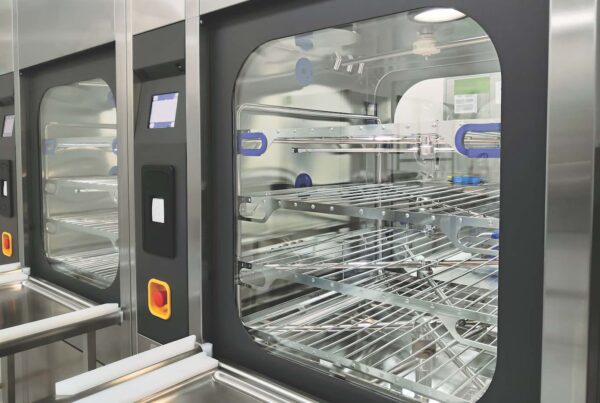Introduction
In the dynamic landscape of healthcare, institutions often find themselves at the crossroads of challenges and opportunities, navigating the intricate path toward transformation. This case study embarks on an exploration of the remarkable partnership between Sarah Bush Lincoln, a distinguished medical center nestled in Mattoon, Illinois, and Surgical Directions. Together, we embarked on a journey that encompassed monumental growth, optimization of surgical services, enhancements in patient safety, and a notable shift in organizational culture.
Problem
Sarah Bush Lincoln bore witness to a period of exceptional growth. Net revenues surged twofold within a short timeframe, accompanied by a substantial increase in surgical procedures. While the introduction of a state-of-the-art outpatient surgery center was a significant milestone, it faced underutilization. The procedural authorization processes stumbled, putting potential revenue at risk. Despite having a robust Pre-Anesthesia Testing (PAT) Department, it struggled to generate sufficient charges for the services provided. Financially, the institution had substantial room for improvement.
- Explosive Growth: Sarah Bush Lincoln experienced an impressive surge in growth, witnessing a doubling of net revenues within just a few years. Surgical procedures surged from 6,600 to nearly 9,600 in a mere three years.
- Underutilized Outpatient Surgery Center: Despite investing in a state-of-the-art outpatient surgery center, it remained significantly underutilized.
- Prior Authorization Challenges: The prior authorization process for surgeries encountered frequent issues, casting shadows of potential revenue problems. The medical center grappled with dilemmas related to proceeding with surgeries due to incomplete authorizations.
- Underperforming Department: The well-staffed pre-anesthesia testing unit, struggled to generate adequate charges for the services rendered, as well as working to the productivity potential.
- Financial Optimization Opportunity: From a financial standpoint, there was ample room for improvement.
These challenges demanded proactive attention and innovative solutions to ensure that Sarah Bush Lincoln could sustain its impressive growth trajectory while delivering high-quality patient care efficiently.
Solutions
The multifaceted challenges faced by Sarah Bush Lincoln were addressed through a comprehensive and strategic approach:
- Formation of Surgical Service Executive Committee: Recognizing the vital need for a dedicated leadership body, the Surgical Direction’s established a Surgical Service Executive Committee. The committee was comprised of surgeons, anesthesia leadership, nursing leadership, and senior hospital administration. This committee assumed control of operations, instilling a sense of accountability crucial in this organizational transformation. Additionally, the committee was charged with managing the reallocation of expanding case volume, optimizing utilization of both surgical facilities.
- Pre-operative Preparation: A pivotal aspect revolved around ensuring the timely preparation and scheduling of patients through the Pre-Anesthesia Testing Department. The introduction of the “three-day rule” mandated that elective cases be fully prepared for surgery at least three business days before the procedure. This encompassed timelier pre-admission testing and patient optimization, financial counseling, pre-authorization, and the proactive resolution of scheduling issues.
- Inclusion of Clinic Staff: To facilitate the seamless implementation of changes, clinic staff, including surgeon’s offices, were actively involved in the design and implementation of the process improvement plans. Their invaluable feedback and input were incorporated into the transformation process, with transparent communication channels such as Surgical Service Executive Committee (SSEC) meetings, ensuring their comprehension and support for the changes.
- Proactive Operational Management: Daily operational management strategies were employed, featuring the Collaborative Daily Review and proactive scheduling management, identifying and addressing issues up to five days in advance of surgery. These strategies aimed to eliminate day of surgery barriers including delays, cancellations, and avoidable throughput issues.
- Streamlined Process: A comprehensive overhaul of the entire surgical process, from appointment scheduling to patient discharge, was meticulously executed. This streamlining process was designed to ensure maximum efficiency, productivity, and quality at every stage of patient care.
- Risk and Reward Sharing: The engagement was marked by risk-sharing by both Sarah Bush Lincoln and Surgical Directions. The risk-sharing agreement underscored a commitment to achieving successful outcomes for both sides. Sarah Bush Lincoln unequivocally expressed its readiness to acknowledge success and provide equal compensation.
Results
The implementation of these innovative solutions yielded a plethora of significant and positive outcomes:
- Improved Patient Preparation: Working with the anesthesia department and surgeons’ offices, patients experienced an enhanced and consistent approach in their preparation for surgery. Using the three-day business rule and scheduled calls, the revamped PAT unit and pre-authorization team is able to ensure patient readiness for surgery. The change in processes resulted in a timelier and more comprehensive patient-friendly approach that significantly reduced last-minute issues.
- Increased Surgical Volume: The surgical case volume saw a notable surge, with 71 more surgeries performed in the first three months of the new fiscal year compared to the previous year. This included the migration of ambulatory procedures to the surgery center, optimizing resource usage.
- Staff Satisfaction and Retention: Staff satisfaction experienced a remarkable boost, marked by fewer turnovers, and enhanced staff retention. Staff members have a much more predictable workload, finishing their work on time, significantly elevating
job satisfaction. - Financial Benefits: The financial front saw substantial improvements. Anticipated outcomes included lower overtime costs, reduced cost-per-case, heightened efficiency, and a decrease in case denials.
- Surgeon Engagement: Surgeons exhibited a noteworthy transformation, shifting from an individualistic mindset to an institution-focused perspective. They actively participated in discussions and decision-making processes more aligned with the best interests of Sarah Bush Lincoln.
These compelling results underscored the pivotal role of collaboration, encompassing leadership, operational management, and process optimization, in ushering positive changes in patient care, resource utilization, and financial performance at Sarah Bush Lincoln. The case of Sarah Bush Lincoln serves as a testament to the transformative power of innovative healthcare solutions and their profound impact on both institutional growth and patient well-being.






